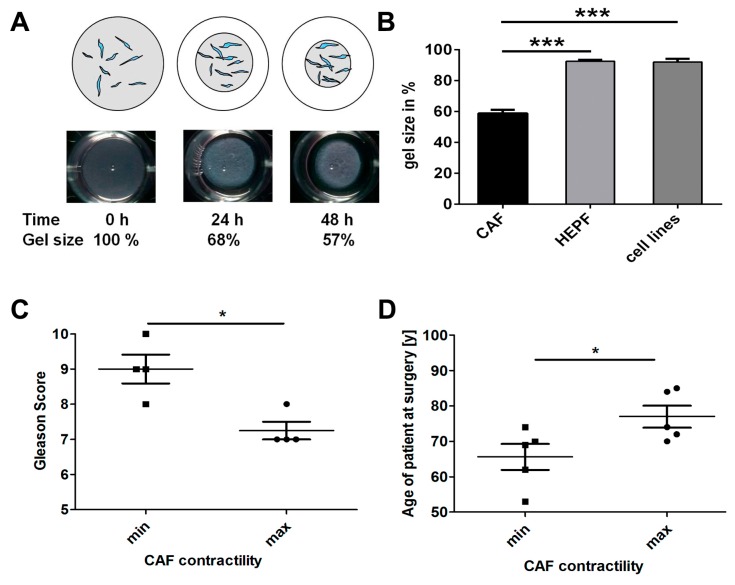Figure 2.
Contractility of CAF in vitro and comparison with Gleason grade and age. (A) Top: schematic diagram illustrating the collagen gel contraction (CGC) assay. Fibroblasts were embedded into a collagen matrix (grey) which contracted during culture period followed by measurement and calculation of percentage contraction; Bottom: images of a collagen gel at 0, 24 and 48 h showing a 68%–57% reduction in size; this corresponds to a contractility of 0%, 32% and 43%; (B) Comparison of collagen contractility of CAF with human embryonic fibroblasts and fibroblast cell lines after 48 h. CAF (n = 20 different primary lines) contracted collagen gels while human embryonic prostatic fibroblasts (HEPF) (n = 4 different primary lines) and fibroblast cell lines (NIH3T3 & WPMY-1; n = 2) showed significantly less contractility (p < 0.0001 and p = 0.0002, respectively; unpaired, two-tailed t-test); (C) Comparison of contractility with Gleason score, when comparing most and least contractile quartiles. The highest contractility was demonstrated by CAF lines from patients with a significantly lower Gleason score than in CAF lines from patients with the lowest contractility rate and highest Gleason score (48 h of incubation, n = 4 per group, two-tailed Mann Whitney test, p = 0.036); (D) The age of donors was significantly lower in the most versus the least contractile CAF lines (48 h of incubation, n = 5 per group; unpaired, two-tailed t-test, p = 0.046). (B–D) Data are presented as mean + S.E.M. and asterisks denote the level of significance: * for p < 0.05, ** for p < 0.01 and *** for p < 0.001.

